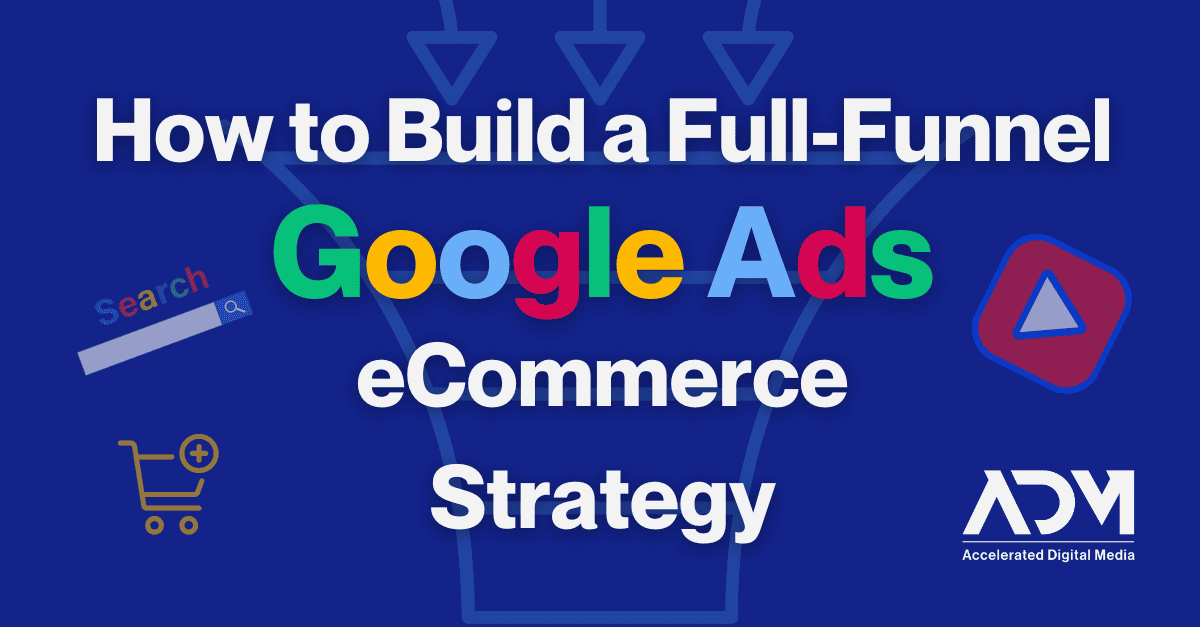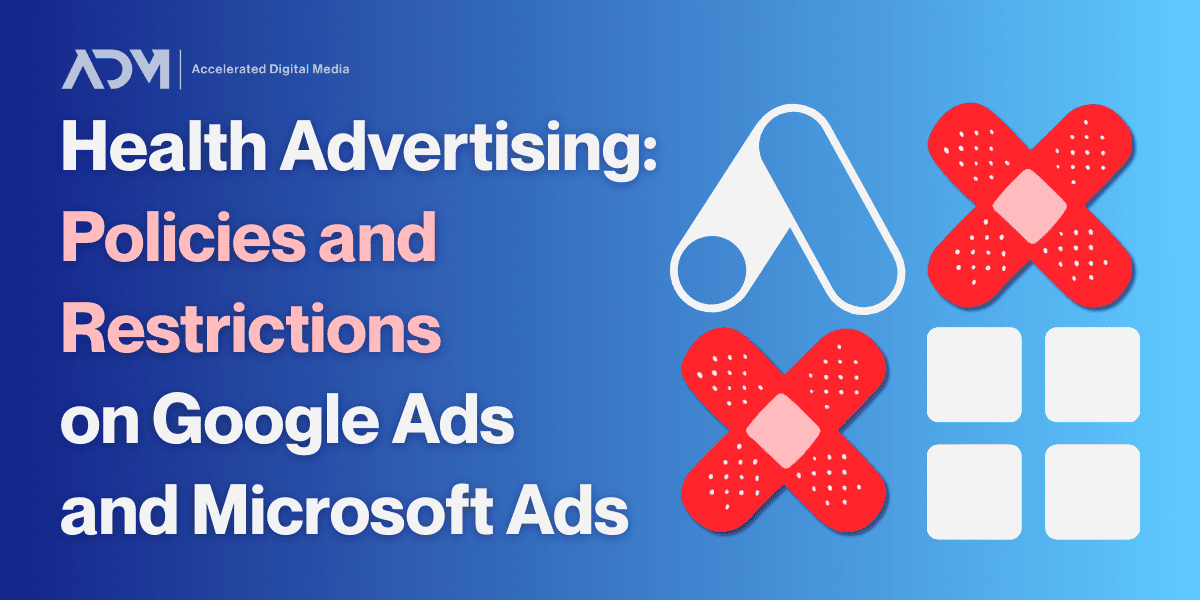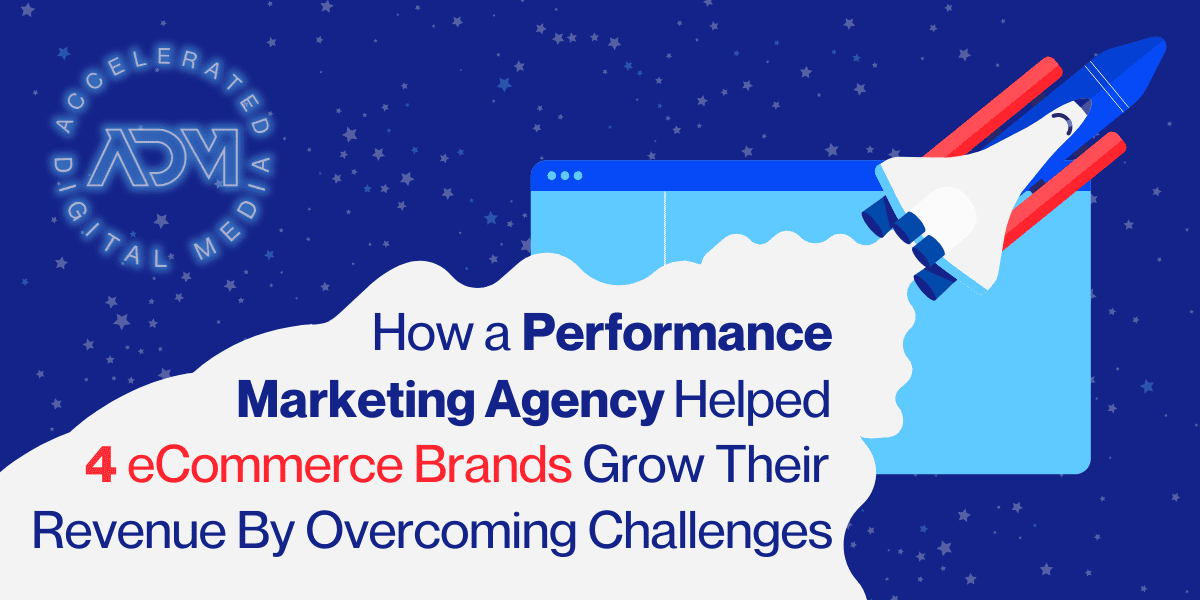Google Ads is one of the most potent eCommerce tools for marketers, but because it’s both highly-nuanced and highly-competitive, it can be easy to miss opportunities. As an expert eCommerce marketing agency, ADM has quite a few pointers about how to build custom Google Ads strategies that address each station of your marketing funnel.
In this blog, we’ll lay out what you need to know about eCommerce marketing on Google Ads, from basic setup and philosophy to ongoing optimizations—and the mistakes you should absolutely look to avoid.
Elements of Good Google Ads eCommerce Campaigns
Once you’ve verified that your tracking and measurement are in place and working correctly, there are a number of things to keep in mind as you go about building your full-funnel strategy. Those include:
Strong Account Structure
A solid account structure is crucial for organizing and running unique campaigns that target different stages of the funnel. This might mean setting up different variations of the same campaign type to address each funnel step. It’s also important to think both in terms of your funnel stages and your different product categories, particularly if your products differ dramatically in average order value (AOV), profit margin, or business priority.
A well-segmented account structure will help you align and realign your strategies based on your goals in both the short and long term, so you can shift focus to different areas of need without having to rebuild entire portions of your account each time your goals or challenges change.
Intentional Keyword Strategy
Your keyword strategy should mirror your funnel approach. This means targeting keywords for the middle, bottom, and post-purchase stages. Breaking keywords out by campaigns and ad groups will allow for more precise budget allocation, bidding strategies, and ad messaging.
Varied Audience Targeting
Audience targeting should be customized to match the stage of the funnel you’re addressing. For example, a YouTube prospecting campaign may require a different approach than a remarketing campaign, even though both might use the Demand Gen campaign type. Each audience segment requires its own tailored strategy.
Focused Ad Copy & Creative
Ad copy and creative should always be aligned with the audience, and stage of the sales funnel they exist in. For search ads, ad copy should closely mirror the intent expressed in the keywords that trigger the ad. If someone is searching for “red shoes,” then the ad copy should primarily highlight color rather than comfort or price. While both of those things can be included, the focus should stay tight to the query itself.
For video and display ads, your creative should reflect the spirit and action you are looking to inspire in potential customers. Since users viewing these ad types aren’t actively searching for your product, attention spans are shorter, making it vital to deliver a strong, visually appealing message quickly.
Good Landing Page Experiences
Once users click your ad, they should be directed to a landing page that aligns with the campaign intent. A well-optimized landing page is key to converting visitors into customers. Segmenting campaigns, ad groups, and ads by product category and intent helps ensure that users land on the most relevant page, improving the likelihood of conversion (to understand more about this, it’s worth checking out our conversion rate optimization webinar).
By having a clear handle on these core elements—account structure, keyword strategy, audience targeting, ad creative, and landing page optimization—you can begin to build a full-funnel SEM eCommerce strategy.
Addressing Each Stage of Your eCommerce Funnel
With all that established, let’s look at how ADM recommends eCommerce brands approach each stage of the sales funnel, from prospecting retention.
Top of Funnel → Awareness Tactics
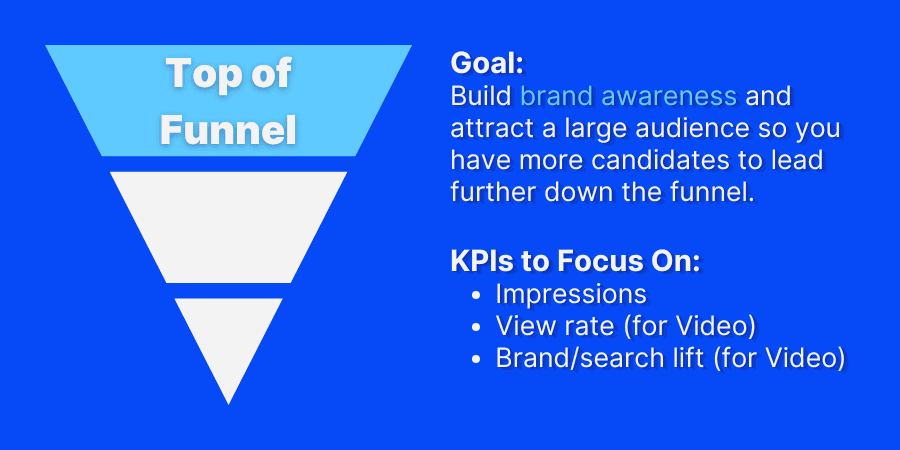
Key Campaign Types:
- Video
- Display
- Demand Gen
At the top of the funnel, you’re priming the pump by introducing new audiences to your brand story and value propositions. Google offers campaign types with visually engaging ads like images and videos to connect with users while they browse websites or watch YouTube videos. The goal at this stage is to raise brand awareness and spark interest in your products. By using broad audience targeting, you’re casting a wider net to draw more potential customers into your funnel.
Targeting:
- Detailed demographic targeting to align with your typical or intended customer type
- Affinity audiences with relevant interests
Creative/Messaging Focus:
In the prospecting stage of the sales funnel, focus on endearing your brand its products to users by telling a compelling brand story or highlighting the unique selling points you offer. At this stage, you’re looking to capture attention, so it goes without saying that you’ll want to prioritize eye-catching visuals.
Middle of Funnel → Consideration Tactics
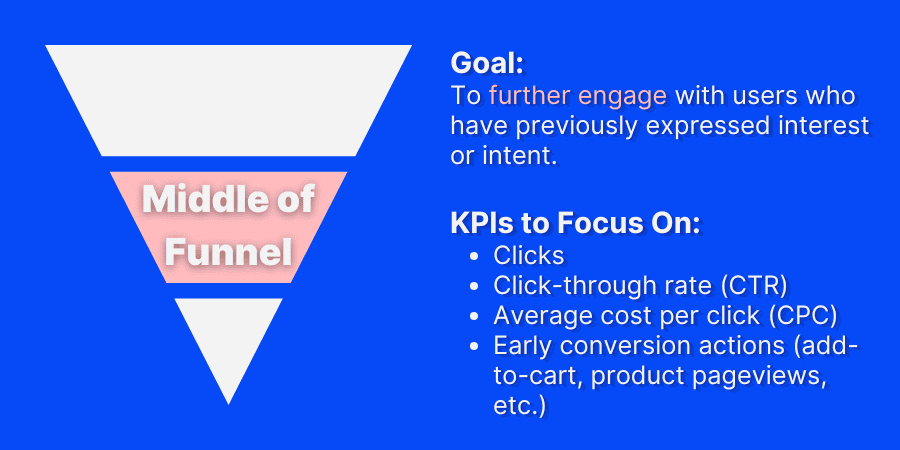
Key Campaign Types:
- Search
- Shopping (Performance Max)
- Video
Mid-funnel strategies aim to keep your brand top of mind while users research your product. Search and Shopping are obviously the most intent-focused mediums on Google Ads and can be directed more specifically by using Google’s in-market and custom intent audiences to target a more qualified audience who is more likely to consider purchasing from you. At this stage, those same audiences can also be targeted again through Video campaigns to provide more depth and a stronger CTA than they may see at the prospecting stage.
Targeting:
- In-market audiences
- Custom intent audiences
- Similar audiences
- Website visitors (excluding converters)
Creative/Messaging Tips:
When speaking to middle-of-funnel shoppers, eCommerce brands should address major pain points, further emphasize product benefits, and use clear CTAs to compel audiences to either direct them towards a purchase or to dive in a little deeper by learning more about your brand and its offerings.
Bottom of Funnel → Conversion Tactics
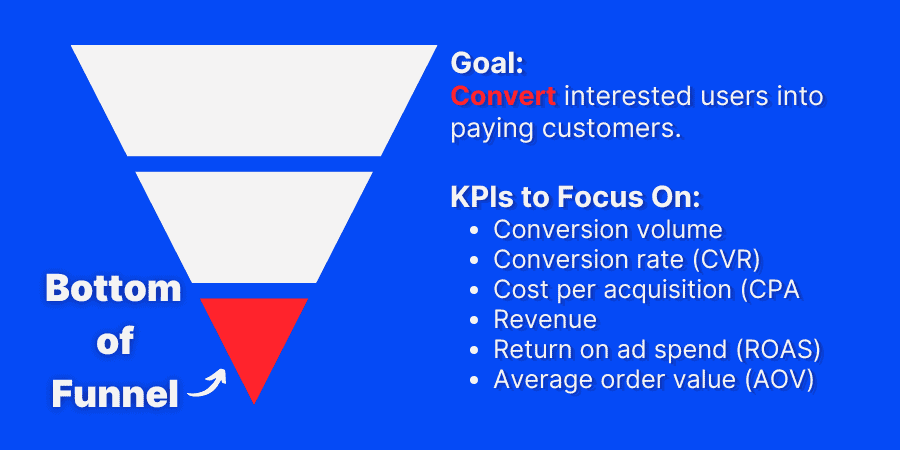
Key Campaign Types:
- Search
- Shopping (PMax)
- Video (remarketing)
At the bottom of the funnel, you’re closing the deal. As users near a purchasing decision, Search and Shopping ads (typically run through Performance Max) are going to be your best bet for visibility during active search moments. Even at this stage of the funnel, however, remarketing campaigns on both YouTube and Search can help re-engage those who have visited your site but haven’t yet purchased.
Targeting:
- Remarketing lists for search ads (RLSA)
- Customer match lists
- Dynamic remarketing
- Website visitors (excluding past converters)
Creative/Messaging Tips:
Since this is “go-time” for conversions, it’s the best place to use your most attractive promotions, discounts. Messaging should still highlight value propositions, but should be paired with a sense of urgency—often in combination with a great offer.
Post-Purchase → Retention Tactics
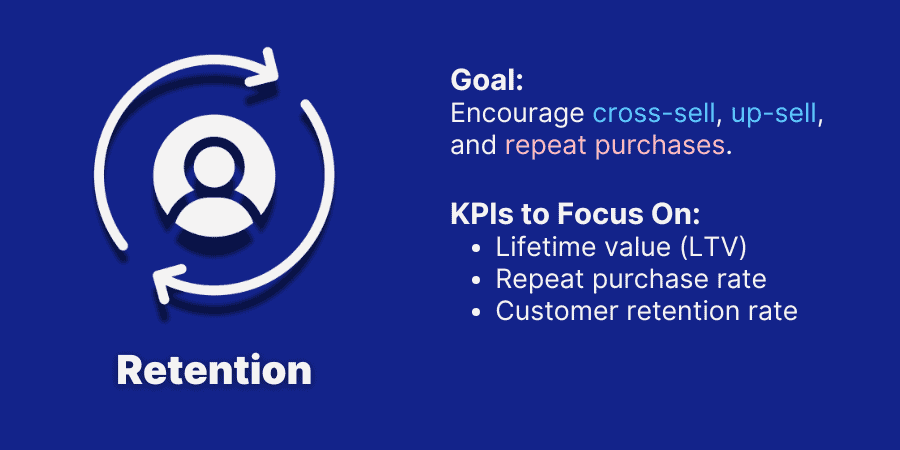
Key Campaign Types:
- Display (remarketing)
- Video (remarketing)
Most eCommerce businesses benefit from—or even survive off of—repeat purchases. While the first sale is essential, it’s vital to think beyond it. How, other than producing a great product that someone wants more of, can you compel users to come back again? Google allows you to upload customer emails to target past buyers with relevant cross-sell or up-sell ads, keeping your brand top of mind so you can increase customer lifetime value (LTV).
Targeting:
- Customer match lists
Creative/Messaging Tips:
Personalize messaging based on everything the customer has already seen throughout the funnel prior, offer loyalty rewards, and highlight complementary products.
Budget Allocation Across the Funnel Can Vary Greatly
There is no singular ideal Google Ads budget structure for eCommerce. How you allocate your budget across different campaign types and funnel stages can vary greatly depending on a few key factors:
How Competitive Your Market Is
If you’re operating in a highly competitive market, you may want to allocate more budget to top-of-funnel strategies to increase brand awareness and outpace competitors. These strategies help you capture a larger audience before they engage with competitors—you can learn more about this topic in our blog about navigating Google Ads competition.
Pre-Existing Brand Awareness
For well-established brands with strong name recognition, more budget can be allocated to mid- and bottom-funnel strategies, focusing on driving conversions and re-engagement. On the other hand, smaller or lesser-known brands should invest more in top-of-funnel campaigns to build awareness.
Your Overall Budget and KPIs
A limited budget often means aggressive efficiency goals, which often require you to prioritize bottom-funnel campaigns. These tend to have lower CPA and higher ROAS. Bottom-funnel tactics focus on converting users who are already familiar with your brand and are ready to buy. Once bottom-funnel strategies are performing efficiently, you can gradually allocate more to top-of-funnel campaigns, which typically have higher CPA but will feed more users into your conversion pipeline.
Determining the optimal budget split between funnel stages can take time and testing. Over time, you’ll discover the ideal balance that drives the best conversion volume at the most efficient cost.
By continuously managing bid strategies, optimizing campaigns, and smartly allocating your budget, you’ll ensure that your Google Ads eCommerce strategy stays competitive and effective.
Ongoing Management and Optimization
Effective ongoing management of Google Ads campaigns is essential to ensuring long-term eCommerce success. Here are the key areas of focus:
Bid Strategies
Using smart bidding strategies like Target CPA/ROAS or Maximize Conversions/Conversion Value helps align your campaigns with your business goals. It’s important to adjust your bid strategies as needed to ensure you’re striking a balance between reach and efficiency. These adjustments allow you to maximize your ad spend without compromising on performance.
Continuous Optimizations
After your campaigns have run for a while and gathered data, you should continuously test and optimize to drive better results. Optimizations can include:
- Keyword expansions
- Ad copy tests
- A/B testing landing pages
- Trying different bid strategies
- Updating creative
These adjustments help ensure you’re maximizing conversions and improving performance over time.
Finding the Right eCommerce Marketing Agency
As the contents of this blog show, there are myriad factors that eCommerce brands need to consider when laying out a comprehensive, full-funnel Google Ads strategy. If you believe your current agency or in-house team is struggling to maximize the conversions and revenue that SEM can bring in, it may be worth getting a Google Ads audit from the experts at ADM. We’re an expert eCommerce marketing agency with a proven track record of finding new growth opportunities for brands of all sizes, and we’d be glad to get in touch for a conversation or audit.


